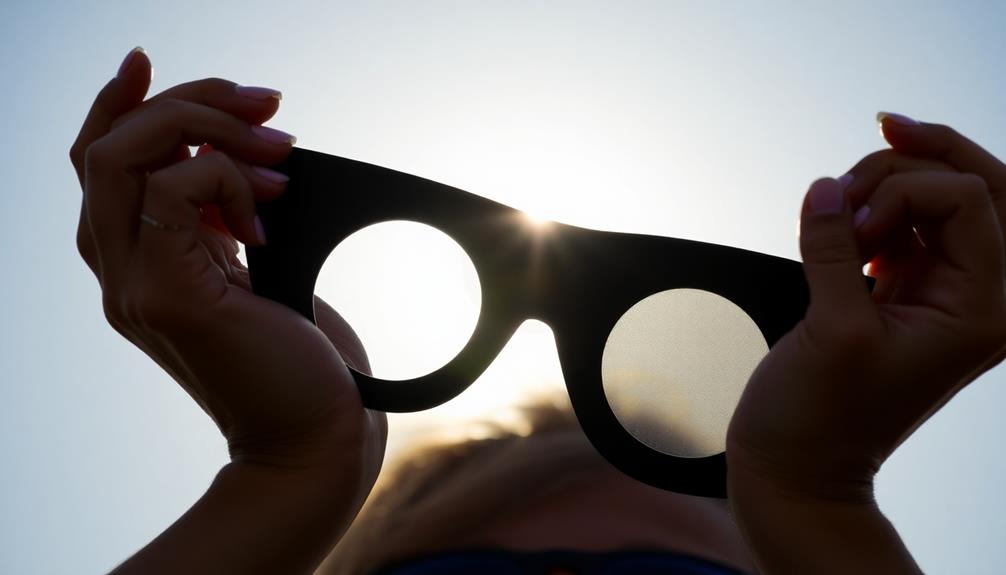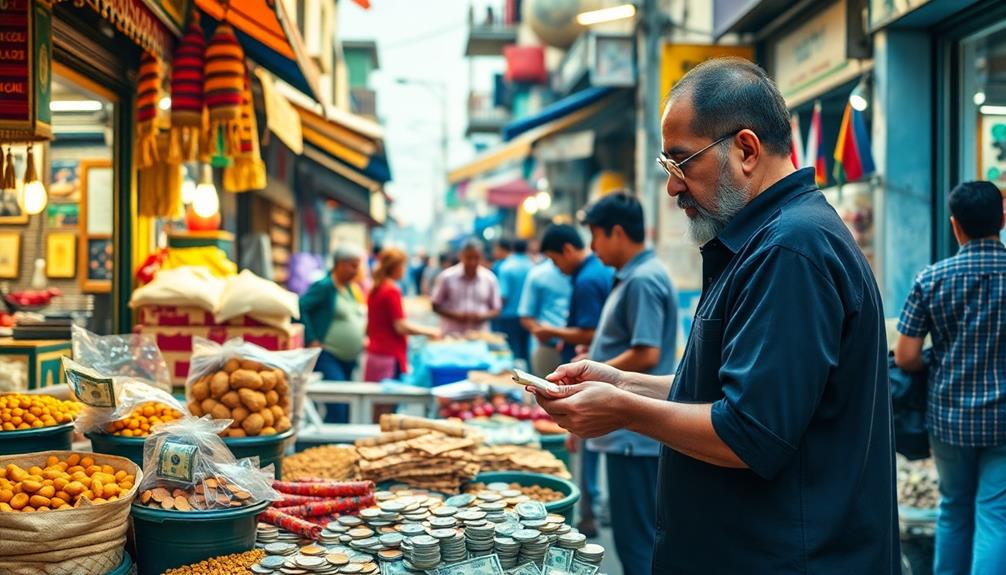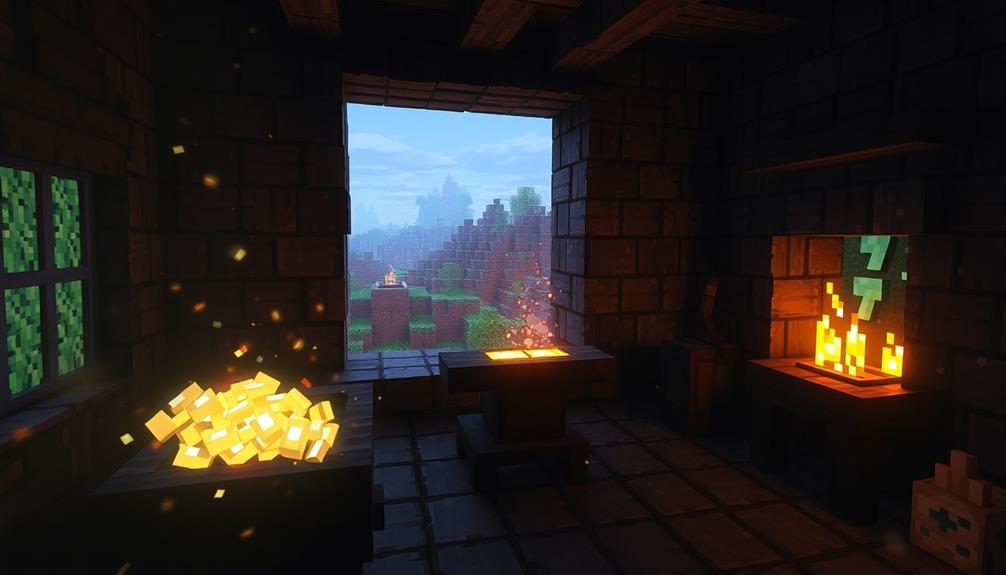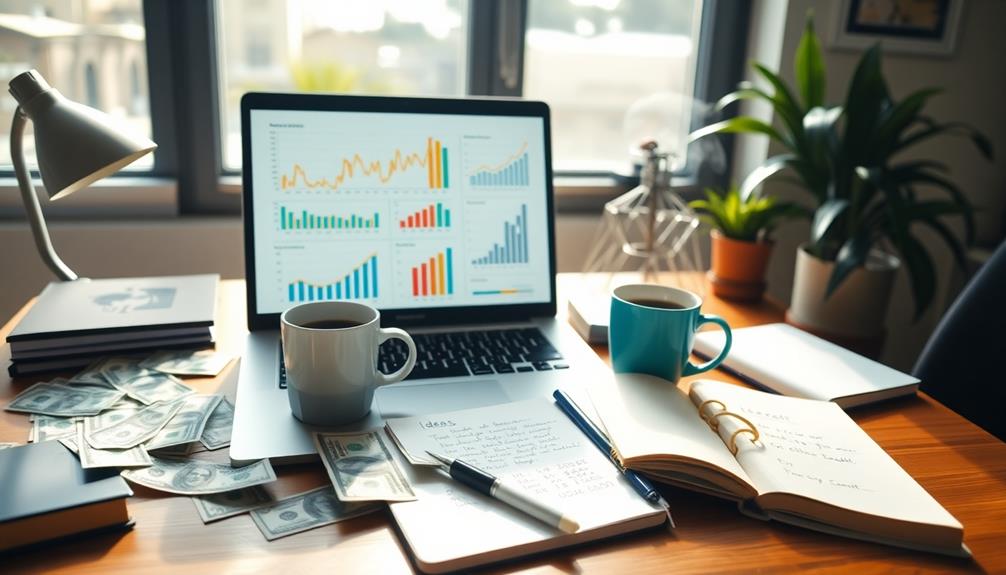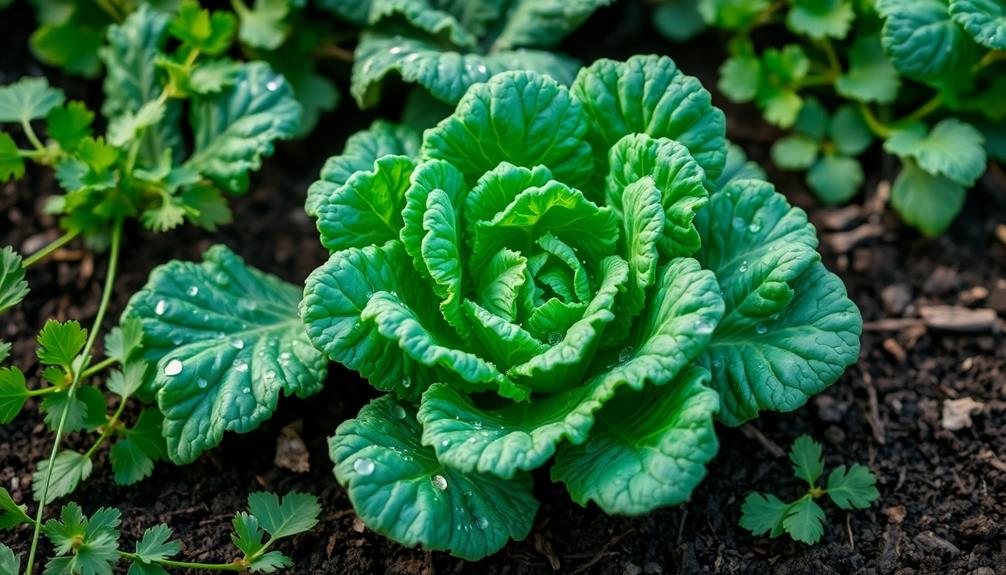Creating your own DIY eclipse glasses is a fun and essential way to prepare for viewing an eclipse safely. Start by gathering materials like poster board, certified ISO 12312-2 solar filters, and some tape. Cut the poster board to form frames, making sure you leave holes for your eyes. Attach the solar filter securely, checking for any scratches or light leaks before use. Be certain to test your glasses in a dark room to confirm they're safe. Remember, safety is key—don't take shortcuts. You'll find more creative viewing ideas and tips to keep your family safe.
Key Takeaways
- Use ISO 12312-2 compliant solar filters to ensure safety when creating DIY eclipse glasses.
- Inspect all materials for scratches and ensure secure fittings to prevent eye damage.
- Follow a step-by-step process to create sturdy frames and properly secure solar filters.
- Conduct light leak tests in a dark room to confirm the glasses are safe for viewing.
- Supervise children closely while using eclipse glasses to ensure they fit correctly and safely.
Importance of Eclipse Glasses

When preparing to watch a solar eclipse, understanding the importance of eclipse glasses is vital for protecting your eyes. You need to make sure that you're using certified glasses that comply with ISO 12312-2 standards.
These eclipse glasses are specifically designed to filter out harmful solar radiation, preventing eye damage that can occur even with brief exposure to the sun.
While traditional eclipse glasses are the safest option, alternatives like No. 14 welding glasses and aluminized mylar sheets can also provide adequate protection. However, you must be cautious; not all glasses are created equal, and using non-compliant filters can lead to serious conditions like solar retinopathy.
If you're considering DIY eclipse glasses, it's essential that you construct them with high-quality solar filters. Always test for light leaks to make sure they provide the necessary protection during the eclipse.
Remember, your eyesight is irreplaceable, so don't take any chances. By using the right eclipse glasses, you can safely enjoy this spectacular celestial event without risking your vision.
Stay safe and enjoy the wonder of the solar eclipse!
Materials Needed for DIY Glasses
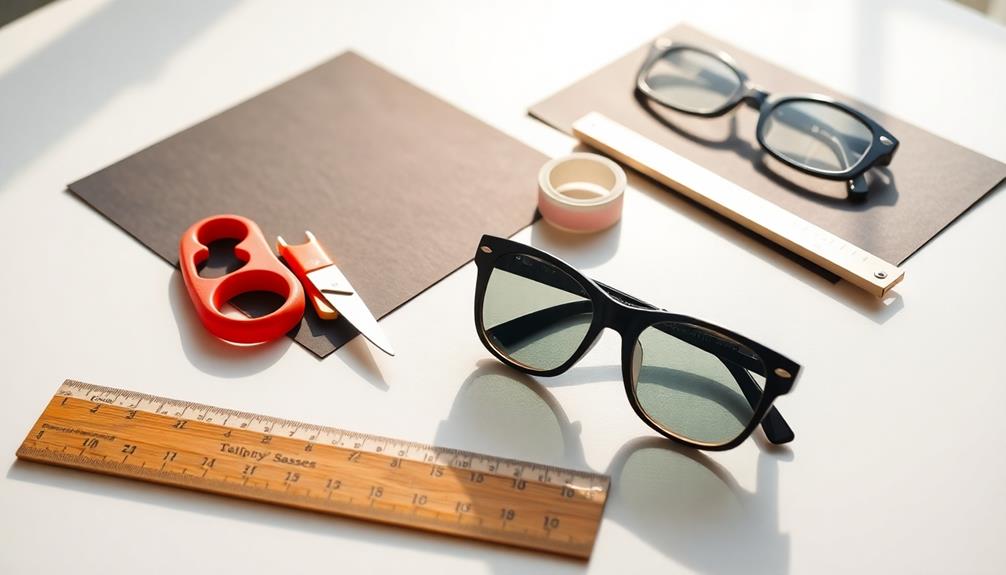
Gathering the right materials is essential for crafting effective DIY eclipse glasses. You'll need a few specific items to guarantee your glasses are safe and functional. Here's a handy table to help you organize what you'll require:
| Material | Purpose |
|---|---|
| Poster board | To create the frames of the glasses |
| ISO 12312-2 compliant solar filter | For safe solar viewing |
| Blue painters tape | To securely attach the solar filter |
| Scissors to cut | For cutting the frames and filter |
| Pen or marker | To mark eye holes and cutting lines |
Start with poster board or card stock, which will form the sturdy frames for your DIY solar eclipse glasses. Make sure to use an ISO 12312-2 compliant solar filter from a reputable source, like NASA-approved options, to guarantee safety while viewing the eclipse. Use scissors to cut the frames and the solar filter to the correct sizes. Finally, a pen or marker will help you accurately position the eye holes and other features before cutting. With these materials in hand, you're ready to get started!
Step-by-Step Creation Process

With all your materials ready, you can start crafting your DIY eclipse glasses. Follow these steps for a safe and enjoyable eclipse viewing experience:
- Lay out your poster board or card stock.
- Draw the outline of your glasses, including eye holes and ear handles.
- Carefully cut out the shapes to create a sturdy frame.
- Measure and cut your certified solar film to guarantee full coverage of the eye holes.
- Secure the solar film with tape or glue, checking for any scratches.
Make sure the solar filter completely covers the eye holes without any gaps that could allow light leaks. This is essential for safe solar viewing during the eclipse.
Once everything's attached, it's time for a final safety test. Head to a dark room, grab a flashlight, and shine it through the glasses. If you see any light leaks, adjust the solar film accordingly.
Testing Your Eclipse Glasses

Before you head outside to watch the eclipse, you need to test your DIY glasses for safety.
Grab a flashlight and check for any light leaks in a dark room—if you see bright light, your glasses mightn't be safe.
If leaks are present, reinforce or replace the solar filter to guarantee you're fully protected when the time comes.
Safety Test Procedure
To guarantee your DIY eclipse glasses are safe for viewing, it's crucial to conduct a thorough safety test in a dark room. Use a flashlight to check for any light leaks, as bright light can indicate potential problems with the solar filter. Follow these steps to guarantee eye safety:
- Find a dark room: Eliminate all sources of ambient light.
- Wear the glasses: Put on your DIY eclipse glasses before testing.
- Shine the flashlight: Point the flashlight directly at the lenses.
- Observe the lenses: Look for any signs of bright light penetrating through.
- Adjust if necessary: If you spot any leaks, reposition or replace the solar film.
If you detect any light leaks during this safety test, address them immediately.
Repeat the process multiple times if needed, confirming no bright light can penetrate the glasses. A successful test run, where no light leaks are detected, indicates that your eclipse glasses are ready for safe viewing during the solar eclipse.
Identifying Light Leaks
During your safety test, identifying light leaks in your DIY eclipse glasses is vital for eye protection. To check for leaks, head into a dark room and use a flashlight. Shine the light directly onto your glasses, observing any bright light that seeps through the frames.
If you notice light leaks, it means your solar filter isn't adequately secured, or there are gaps in the frames that need fixing. Make certain the solar film completely covers the eye holes, guaranteeing enough overlap to prevent any light leakage.
Remember, bright light entering your glasses indicates they aren't safe for eclipse viewing. If you detect any leaks, you'll need to reapply the solar filter or repeat the assembly process to guarantee complete coverage.
Once you've conducted the test, a successful run with no light leaks observed confirms that your eclipse glasses are ready for safe solar viewing. Taking the time to identify and address any light leaks is vital to protect your eyes during the eclipse.
Don't skip this step; your eye safety depends on it!
Alternative Viewing Methods

If you don't have eclipse glasses, you've got plenty of safe alternatives to enjoy the spectacle.
Pinhole projectors, cereal box viewers, and eclipse masks can all help you witness the event without risking your eyesight.
Let's explore how you can create these simple yet effective viewing methods.
Safe Pinhole Projectors
One of the safest and simplest ways to view a solar eclipse is by using a pinhole projector, which protects your eyes while still allowing you to enjoy the spectacle. Creating your own is easy! Just take a piece of thick paper, cut a small hole in it, and hold it in sunlight. As the light passes through the hole, it projects an image of the eclipse onto a flat surface below.
This method is similar to how air purification systems work by filtering out harmful elements, ensuring a clear view of the event.
To enhance your viewing experience, consider these tips:
- Use multiple pinholes to improve visibility.
- Experiment with different distances from the surface to find the clearest image.
- Look for leafy trees; their gaps create a natural pinhole effect.
- Adjust the angle of your paper for ideal projection.
- Make sure you're in a shaded area to reduce glare.
This method allows for a safe eclipse experience, ensuring you can enjoy this cosmic event without risking eye damage.
With a few simple materials and a little creativity, you'll have a fun and effective way to witness the wonder of a solar eclipse!
Cereal Box Viewers
Cereal box viewers offer a simple yet effective way to safely enjoy a solar eclipse. These DIY eclipse viewers utilize a cereal box to create a pinhole projector, allowing you to view the eclipse without risking eye damage.
To make your own, start by cutting two small openings at the bottom of the box—one for viewing and another covered with foil or paper. Puncture a small pinhole in the foil to let sunlight in.
When you're ready to view the eclipse, hold the cereal box with the pinhole facing the sun. You'll see the projection of the eclipse inside the box, ensuring you're not looking directly at the sun. This method makes it easy to view the eclipse safely, especially for children who can engage in the process of making and using the eclipse viewer.
Materials needed include a cereal or shoe box, scissors, tape, and a pin for creating the pinhole. Not only is this an accessible project, but it also provides an engaging hands-on experience that enhances your understanding of solar phenomena.
Eclipse Viewer Masks
Creating eclipse viewer masks offers another exciting way to experience a solar eclipse safely. You can easily make these masks using paper plates and ISO-approved solar eclipse glasses. This method is especially great for kids, providing a comfortable viewing option while keeping safety in mind.
To craft your eclipse viewer mask, follow these steps:
- Use a paper plate as the base.
- Mark and cut slits for the arms of the eclipse glasses.
- Create a cut-out area for the nose and mouth for a snug fit.
- Slide the solar eclipse glasses into the slits, securing them in place.
- Personalize the mask with colorful markers, crayons, or stickers for added fun.
This engaging activity combines creativity and safety, allowing families to enjoy the solar eclipse together. By using eclipse glasses, you can make eclipse glasses safe and guarantee that everyone sees the spectacular event without risking their eyesight.
Safety Precautions for Viewing
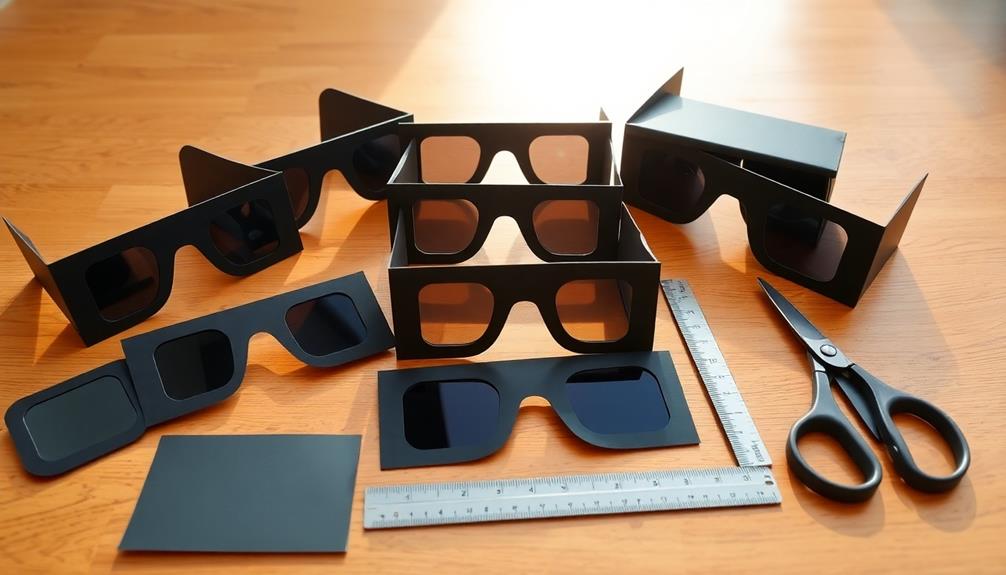
Viewing a solar eclipse safely requires careful preparation and the right equipment. To protect your eyes, always use certified eclipse glasses that comply with ISO 12312-2 safety standards. These filters are specifically designed for direct solar viewing and prevent serious damage, like permanent retinal burns, which can occur if you look at the sun unprotected.
Before using your eclipse glasses, inspect them for scratches or damage. Compromised filters may not provide adequate protection, putting your vision at risk.
If you're considering a DIY Solar Eclipse project, verify any homemade viewers meet safety standards. Avoid using alternative viewers that haven't been tested, as they can expose your eyes to harmful solar rays. Remember, direct viewing is dangerous; stick to approved methods.
Supervise children closely during the event, verifying their eclipse glasses fit securely to prevent accidental exposure to direct sunlight.
If you're engaging in indirect viewing methods, choose safe techniques, like projecting the sun's image through a pinhole. By following these safety precautions, you'll guarantee a memorable and safe eclipse experience.
Frequently Asked Questions
Is It Safe to Make Your Own Eclipse Glasses?
Making your own eclipse glasses can be safe if you use ISO-certified solar filters. Ascertain you obtain high-quality materials, test for light leaks, and never look directly at the sun without proper protection.
How to Make Eclipse Viewing Glasses at Home?
To make eclipse viewing glasses at home, gather heavy stock paper, ISO-certified solar filter lenses, and tape. Cut eye holes, secure lenses, and test for leaks in a dark room before using them safely.
How to Make Eclipse Glasses Out of a Cereal Box?
Imagine a sunny day, and you're enthusiastic to watch an eclipse. To make a cereal box viewer, cut openings, cover one with foil, create a pinhole, and position it to safely view the eclipse's projection.
What Can You Use for Solar Eclipse Glasses?
You can use ISO-certified solar filters, like shade 14 welding lenses, for solar eclipse glasses. Sturdy materials such as heavy stock paper or cardboard make excellent frames, ensuring your glasses are safe and durable during viewing.
Conclusion
Making your own eclipse glasses is a fun and rewarding project that guarantees you're ready for the big event. You might be thinking, "Why bother when I can just buy a pair?" But creating them yourself adds a personal touch and can save you money! Plus, there's a sense of accomplishment in crafting something that protects your eyes. With your DIY glasses in hand, you're not just prepared—you're ready to fully enjoy the wonders of the eclipse!

